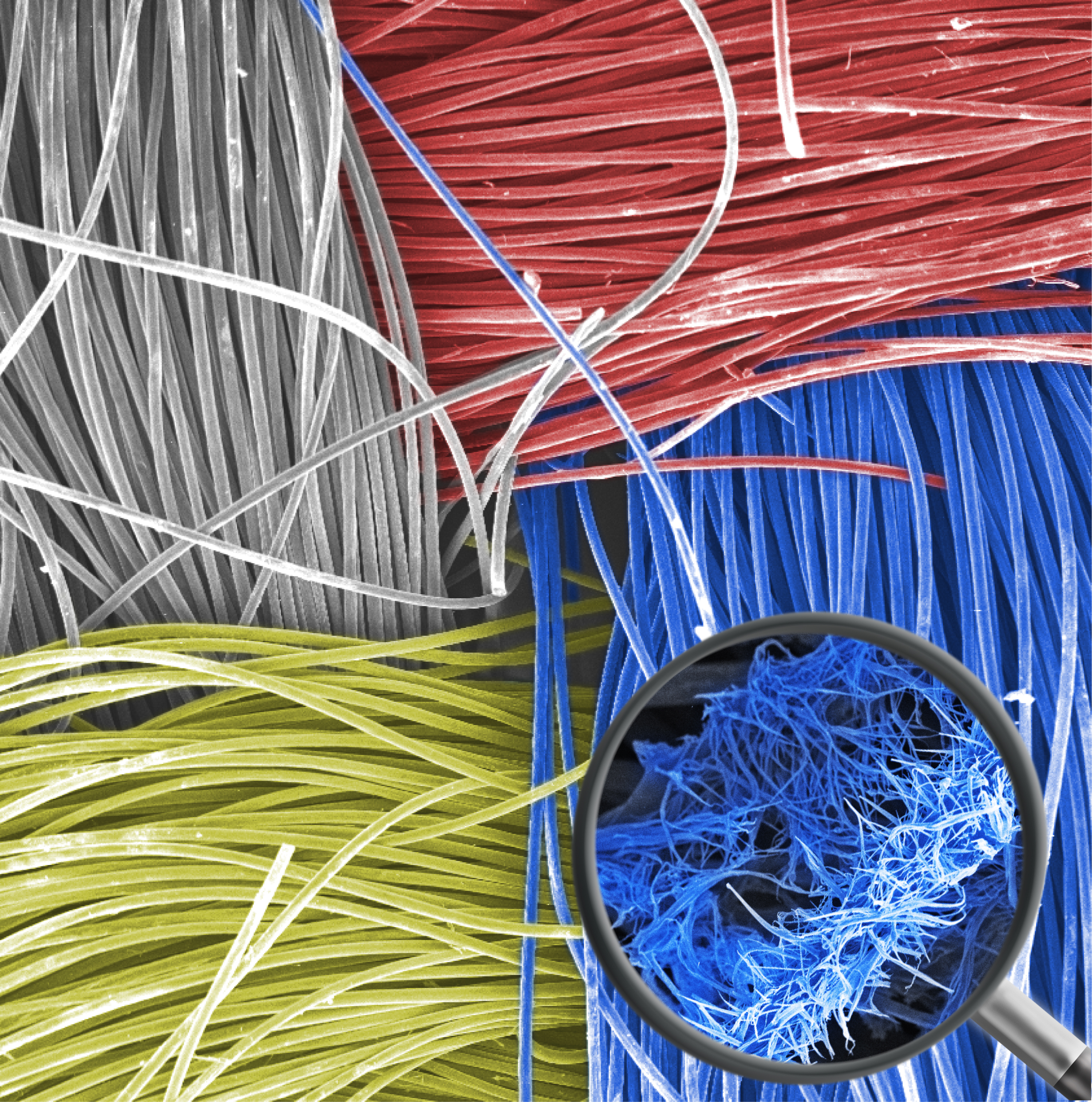Researchers in the Department of Chemistry and the Institute of Materials Science & Engineering at Washington University in St. Louis have developed a new material for portable energy storage.

Transforming everyday materials, such as red bricks and drugstore humidifiers, into innovative energy storage technologies is a hallmark of chemist Julio D’Arcy’s work. Now, he and his team have created a flexible carbon fabric to add to their line of materials with hidden electrical properties. Their research, “Solid-State Precursor Impregnation for Enhanced Capacitance in Hierarchical Flexible PEDOT Supercapacitors,” was published online April 5 in ACS Nano.
When discussing his process for making novel materials, D’Arcy, assistant professor of chemistry in Arts & Sciences, emphasizes that advanced chemistry can come from unexpected sources – like rust – and doesn’t have to be fancy to make a big splash. “The funny thing is that you can buy rust at Home Depot, and that’s exactly what we did,” D’Arcy said. “Chemical companies are not going to like us!”
Rust comes in an array of colors and formats for different applications, such as tinting concrete. D’Arcy noted that commonly available rust powder is remarkably pure and inexpensive, in addition to being of microscopic particle size. When paired with the advanced equipment available at WashU’s Institute of Materials Science & Engineering (IMSE), this inexpensive material proves ideal for his work.

“We found that you can use flexible materials like textiles – woven carbon cloth in this case – for making electrodes for batteries,” D’Arcy explained. “Because the cloth is made of carbon fiber it already conducts electricity. We then impregnated the carbon cloth with rust particles, which allowed us to pack more solid conducting particles into the fabric compared to painting it with liquid rust.”
With this preparation work done, the impregnated carbon cloth then goes into a reactor where it’s treated with vaporized acid commonly used for cleaning rust (another product easily acquired at any hardware store). The acid infiltrates the cloth, dissolving the solid rust particles and making them very reactive. Finally, the rust-infused carbon cloth is exposed to a gaseous vapor, which reacts with the rust and results in the semiconducting plastic (PEDOT) becoming chemically interwoven throughout the cloth. D’Arcy’s research group developed this technique, known as rust-assisted vapor-phase polymerization, in earlier work on supercapacitive nanofiber carpets.
As in his earlier work, D’Arcy’s methods continue to break records. “We’ve produced one of the highest metrics for capacitance in the field, and at the same time the material remains very flexible,” D’Arcy said. Achieving these two properties simultaneously has been a fundamental struggle in materials science. For D’Arcy’s group, the magic comes from the unique structure of the material.

“Our nanofibers are porous,” D’Arcy explained. “We have a kind of sandwich structure where we only coat the top and bottom of the carbon fiber. The space between is actually hollow, which lets us make a thick electrode without slowing energy storage processes. And it’s mechanically robust – you can bend it many times without it breaking, peeling, or losing capacitance.” The result is record-breaking energy storage by area.
The future of energy storage D’Arcy envisions will enable new functionality in familiar objects, including wearable devices. “Of course, we want high energy density, but we also want flexible devices, lightweight devices, devices that can be embedded in different materials,” D’Arcy said. “Our process for integrating polymer nanofibers allows you to do that, to make something that is mechanically robust and therefore performs better electrochemically.”
Though D’Arcy doesn’t recommend rushing out to make clothing from his souped-up carbon cloth – it’s too scratchy, he says, like wearing a burlap sack – it is well suited for tents or other applications that might traditionally call for canvas. Particularly in military applications where soldiers must carry supplies for a number of days without exceeding certain weight limits, having shelter do double duty as energy storage would reduce the amount of weight spent on batteries.
“At a fundamental level, we’ve demonstrated the possibility that we could do this with other types of cloth,” D’Arcy said. Today, tents. Tomorrow, who knows? Perhaps homes constructed from D’Arcy’s smart bricks could be outfitted with energy-storing curtains.






